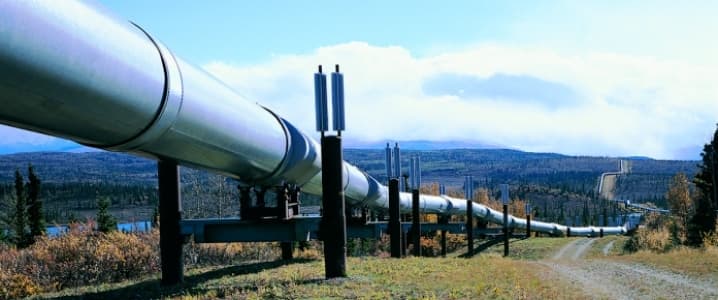The contract model for oil pipeline space has some North American producers locked into high per-barrel transportation rates, while others benefit from steep discounts pedaled in bearish markets, a new report by Reuters says.
Traditionally, producers that sign a long-term contract with a major pipeline company, such as Plains All American or TransCanada Corp, receive a generous discount for their commitment. The pipeline company can then utilize said receivables as collateral to secure funding for new routes, creating a cycle of asset growth. Meanwhile, companies looking to use the pipelines only occasionally are charged a premium for their sporadic patronage.
But as pipeline companies scramble to sell unused capacity, the tables are turning, and long-term contracts are no longer the cheapest way to move oil.
"If I were a producer with a long-term contract, I would be very unhappy at the present time,” Rick Smead, managing director of advisory services at Houston-based RBN Energy told Reuters. “But, the reality is that when they (signed contracts), they were trapped.”
Since the oil price drop of 2014, pipeline companies have struggled to find producers willing to ship their goods at pre-crash price levels and at pre-crash volumes. Long-term contract rates for TransCanada’s 700,000 bpd Cushing-Marketlink Pipeline varied between $1.63 to $2.93 a barrel during normal market conditions. Occasional users paid $3 to use the line, which takes crude from storage facilities in Cushing, Oklahoma, to refiners in Texas.
Low demand from hemorrhaging production in 2015 meant pipelines were left empty, opening up opportunities to resell space allotted to contracted customers in a secondary market with rates at a 75 percent discount in some cases, traders said.
At the end of 2016, TransCanada’s corporate marketing department offered a tariff between 30 and 40 cents for Cushing-Marketlink, severely undercutting companies that set their rates in stone when barrel prices were soaring high. Related: The Offshore Boom To Break The OPEC Deal
As production in the Permian and Bakken formations recovers in 2017, traders say average tariffs have now stabilized at 80 to 90 cents per barrel. Even with the discounts, the pipeline often operates at below 70 percent capacity.
Companies from all parts of the oil and gas supply chain have had their bottom lines slashed due to the international supply glut now completing its third year. Right after the initial price drop in September, producers sought “efficiency gains” in operational costs, which often translated to just demanding lower fees from oilfield services companies.
Pipelines charge companies on a usage basis, so for producers, cutting those costs was easy. Shut down rigs, lower output and, ta da: transportation expenses plummet accordingly.
But the initial rush of off-the-cuff innovation and cost-cutting negotiations is running out of steam. The easy to drill, low-hanging fruit of the Permian has been plucked, analysts say.
"They definitely can't maintain the trajectory they're on," said Ben Shattuck, an analyst at Wood Mackenzie, according to the Houston Chronicle. "For a lot of these pad wells to work, you need those ultralow service prices, and that doesn't happen when you have more than 300 rigs in the Permian."
Oilfield services companies have started to hike up their prices in lockstep with the deployment of new rigs, especially in Texas. Pipeline companies should see their tariff tables rebalance accordingly, as producers return to the reliable and cost-effective transportation infrastructure. At the same time, if shale production rises higher, it could cause another price crash – which means this process starts all over again. Producers locked in on the pre-crash contracts will have no one to blame but themselves.
By Zainab Calcuttawala for Oilprice.com
More Top Reads From Oilprice.com:
- BHP Billiton Chairman: $20B Shale Investment Was A Mistake
- Only $60 Oil Can Save The Aramco IPO
- Will Central Banks Derail The Shale Boom?


















